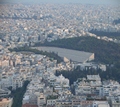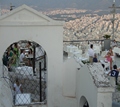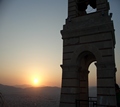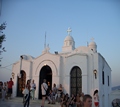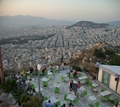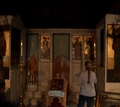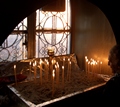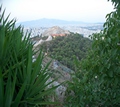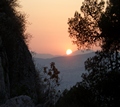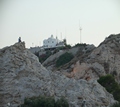
It is the highest hill of Athens (height 277 m.) located in the center of the city. It is said to have taken its name from the packs of wolves that roamed the hill (lykovatias drymos) and is referred to as "the hill where the twilight walks" (lyke + vaino). According to ancient Greek mythology, the hill was formed by a rock that fell from the hands of the surprised goddess Athena when she learned of the Birth of Erichthonius from the daughter of Cecrops.
On the hill you can see the Theater of Lycabettus, the chapel of Agios Georgios, the church of Agioi Isidore and the Cave of Agios Aristides. The outdoor Theater (3000 seats) was built in 1964-65 by the architect T. Zeneto on the site of an old quarry to host performances of ancient drama. In the place of the current church of Agios Georgios Kavalaris there was in ancient times the sanctuary of Akraios Dios and in the Middle Ages the chapel of the Prophet Elias. The chapel of Ai Giorgi was renovated by Queen Olga (1851-1926), whose donation is the belfry that is preserved to this day. The small church of Agios Isidores, dedicated to Agia Merope, Agios Isidoros Pelusiotis and Agios Gerasimos, is located on the western side of Lycabettus. It is a small single-aisled basilica, built in the 15th - 16th century inside a rock on the ruins of the ancient sanctuary of the goddess Isis. It was formerly called the chapel of Agios Sidereas, it burned down in 1930 and was rebuilt in 1931. In the sanctuary, a hole (stoa) is visible that led to Galatsi and Penteli, from where, as it is said, the Greeks escaped during the Turkish occupation. The Cave of Agios Aristides is preserved near the chapel of Agios Isidores. In the 2nd century AD, Saint Aristides the Philosopher and Martyr, persecuted by the Romans, found refuge in a cave that later became his hermitage. The small space, which today bears some images of Saints Aristides and Gerasimos, is not open to the public.
Editor: Fotini Anastasopoulou












